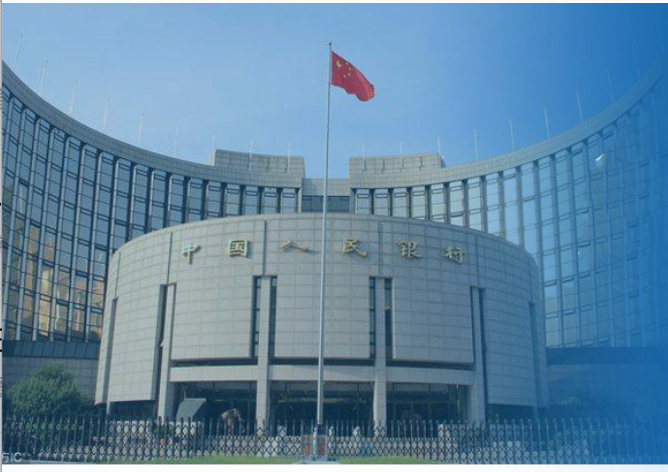
BEIJING, July 8 (TMTPOST) The financial market jittered for quite a while when the Renminbi (RMB) exchange rate slipped above the threshold of 7 to the U.S. dollar in August 2019. That was a stunning spike since 2008. Two popular interrelated narratives conjured up to explain this protrusion: the deceleration of the Chinese economy and accelerating of trade tensions with the United States.
By a snapshot, the equilibrium between freely exchangeable currencies is determined by supply and demand. However, in a dynamic fashion, multiple variables, such as monetary policies, interest rates, inflation, balance of payment, foreign direct investment in the respective countries involved, solitarily or collectively, may swing the pendulum.
Ultimately, it is the intrinsic value embodied by a currency, i.e. its real purchasing power, that dictates its rate of exchange.
Since his campaign race to the White House, Trump has vowed to label China as a currency manipulator in order to gain additional leverage to impose punitive tariffs against Chinese exports, only to find himself time and again disappointed by the semiannual reports from the U.S. Department of the Treasury. The fresh Report on Macroeconomic and Foreign Exchange Policies of Major Trading Partners of the United States released by the Treasury in May 2020 placed China on the “Monitoring List” that merit close attention to their currency practices among other major trading partners including Germany, Ireland, Italy, Japan, South Korea, Malaysia, Singapore, and Vietnam. U.S. Treasury Secretary Steven Mnuchin also marveled at the fact that “China has made enforceable commitments to refrain from competitive devaluation, while promoting transparency and accountability.”
Based on the three assessment criteria for the Treasury to determine whether a country can be labeled a currency manipulator, i.e. 1) significant trade surplus with the United States, 2) sizeable current account surplus, and 3) evidence of one-sided, persistent currency intervention. China is evidently disqualified on the third one. This proves that the large trade surplus gained by China with the United States is resulted from its fair practices drawing on its solid market-driven competitive advantages. However, recent move by the Treasury is worth noting in that it has expanded the radius of surveillance to include any partner that exceeds $40 billion in bilateral goods trade, and in the meanwhile has lowered its current account surplus benchmark from 3% to 2% of the country’s GDP.
The rationale against currency manipulation rests upon the fundamental liberal economic notion to preserve fair competition amongst equal market players free from government intervention. Artificial depreciation of a sovereign currency serves to boost a country’s exports and allures foreign investment inflow.
Over the past four decades of Chinese reform and opening-up policy, the country’s exchange rate formation mechanism has experienced dramatic changes. In the beginning years, the RMB rate versus the pegged U.S. dollar was strictly sanctioned by the government on plural tracks – open quotes and adjustment rate for trade. When the rate was set at US$1:RMB1.55 in 1979, for instance, the black market naturally emerged in spite of heavy-handed crackdown by the government. Exporters who earned foreign currencies were heavily subsidized at the designated exchange counters with the Bank of China. Since 1981, the rate of exchange rolled all the way downhill until hitting the bottom of 1:8.61 in 1994 when the two tracks converged, paving the way for the announcement of free convertibility under current account two years later. When managed floating rate was adopted, black markets disappeared and foreign exchange certificate (FEC) as an instrument for currency control was phased out. The exchange rate stabilized for a decade in the proximity of 1:8.30 until 2005 when it de-pegged solely on the U.S. dollar and linked its value to a basket of 5 major global currencies: the sterling pound, the Japanese yen, the U.S. dollar, the euro and the HK dollar. That sustained RMB into an appreciation trajectory which successfully withstood the Asian Financial Crisis at the turn of the century and has remained resilient and elastic as of the present day.
See Exhibit 1:https://www.macrotrends.net/2575/us-dollar-yuan-exchange-rate-historical-chart)
The evolvement of RMB exchange rate vs. the U.S. dollar in the past four decades
Since the introduction of foreign currency trading to the interbank foreign exchange market in 2005, the level of sophistication for the Chinese central bank to manage the dynamism of foreign exchange has been on a steady increase. The aim is to safeguard its currency stability while cautiously expanding the corridor of fluctuation in response to the volatility of global financial market. In addition to bilateral and pair spot trading with major currencies as a mean for open market operation, a host of financial instruments has been employed, which include credit lending, bond trading, voice brokerage, forward trading, and commercial paper quotation.
The adoption of China Foreign Exchange Trade System (CFETS) RMB Index by the People's Bank of China (PBOC) in 2015 further distanced RMB from US$ by weighing the value of RMB on a basket of 13 currencies currently listed and directly traded. That means the RMB performance in either direction does not have to tread at the heels of the U.S. dollar precariously maneuvered by the U.S. monetary policy.
The inclusion of RMB as the fifth currency in the basket of special drawing rights (SDR) by the International Monetary Fund (IMF) in 2016 was considered a milestone in the globalization drive of the Chinese currency although it takes time to gain broader utility in the international business community. It is tacitly understood as another structural adjustment in the global financial institution after the creation of the euro since the collapse of the Bretton Woods arrangement in early 1970s. However, symbolic it may appear in the short run, it also injects a stronger sense of responsibility on the part of the Chinese monetary authority to increase transparency and accountability in its policy formation.
China earned the respect from her neighbors by refraining from joining the currency depreciation race during the Asian financial crisis. With its rising economic might and cashing in on its currency credibility, China has successfully entered into a slew of Bilateral Swap Agreements with 30-plus partner countries in excess of three trillion RMB. It is a collective effort to forge a bulkhead against the looming financial crisis since 2008.
The BRICS New Development Bank (NDB) and the Asian Infrastructure Investment Bank (AIIB) headquartered in Shanghai and Beijing are new multilateral financial institutions in which China finds a significant role to play with respect to infrastructure development and sustainable growth. While NDB maintains its commitment among the five BRICs countries, AIIB now has grown to 102 approved members worldwide. Since they entered into operations in 2016, dozens of gigantic projects are underway. They do not only make up for the deficiency of those established multilateral financial institutions such as the World Bank and the Asian Development Bank (ADB), but also innovatively contribute to the U.N. Sustainable Development Goals (SDGs) which falls perfectly in line with the mission of China’s Belt and Road Initiative (BRI).
The Relevant Measures to Further Open the Financial Sector promulgated by the State Council in 2019 caused a sensation in the global financial community allured by the country’s RMB300 trillion financial assets in the hands of banks, securities, insurers and fund managers. That was a decisive move arguably analogous to China’s accession to the World Trade Organization (WTO) in 2001. The eleven measures overhauled restrictions on the entry and equity participation of foreign financial houses with specific terms and timeline. The beginning of 2019 witnessed the approval of S&P Global as the first foreign credit ratings agency to set up its own local unit in China, which was soon followed by Fitch Ratings responsible for rating fixed-income securities in the country's interbank market. The influx of foreign financial players is expected to usher China to closer convergence onto a globalized level playing field.
Academicians agree that accountable prediction is best supported by regression analysis. The salient path the Chinese RMB has been traveling along is in a nutshell: liberalization and globalization. Extra caution between times may be criticized as protective especially in view of the long-waited liberalization of its capital account, but it is a responsible learning curve Chinese governors and managers have been climbing with diligence, passion and inspiration.


